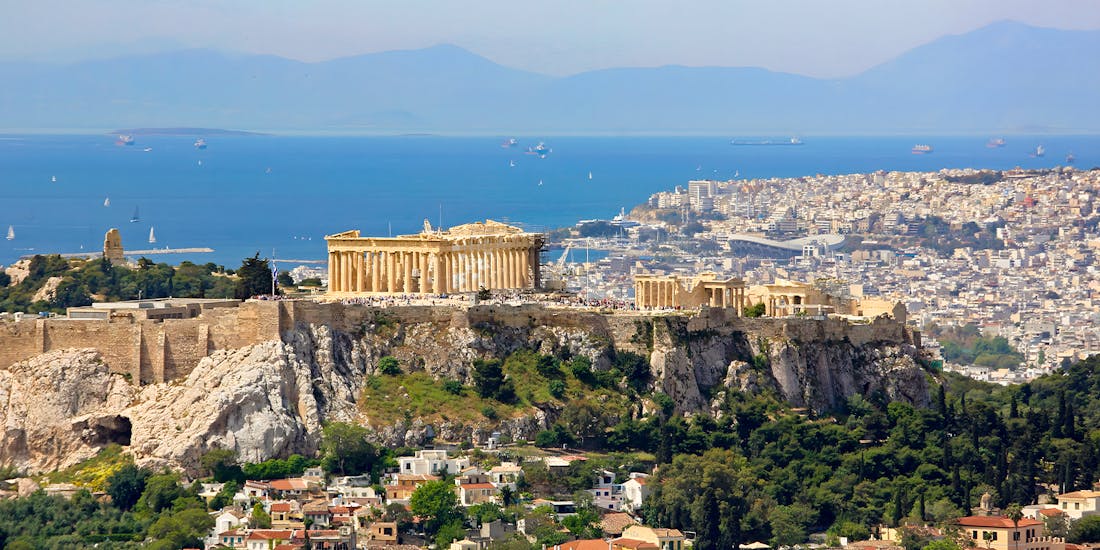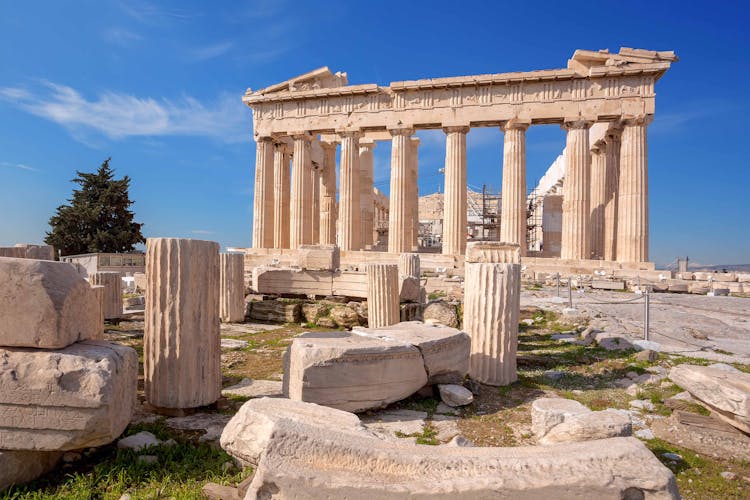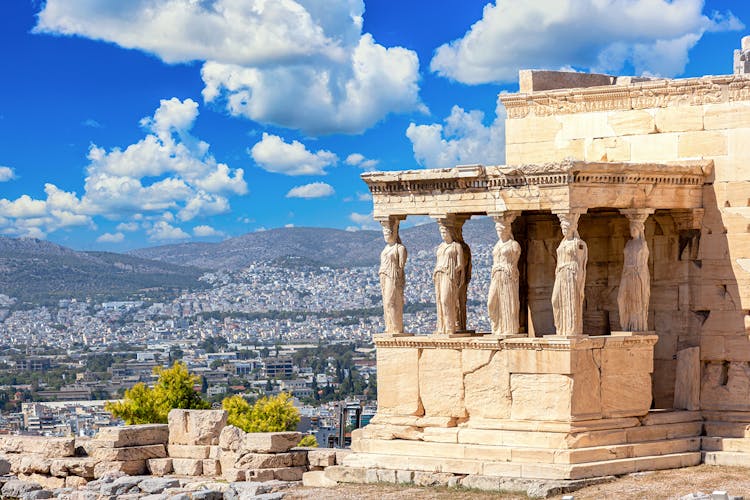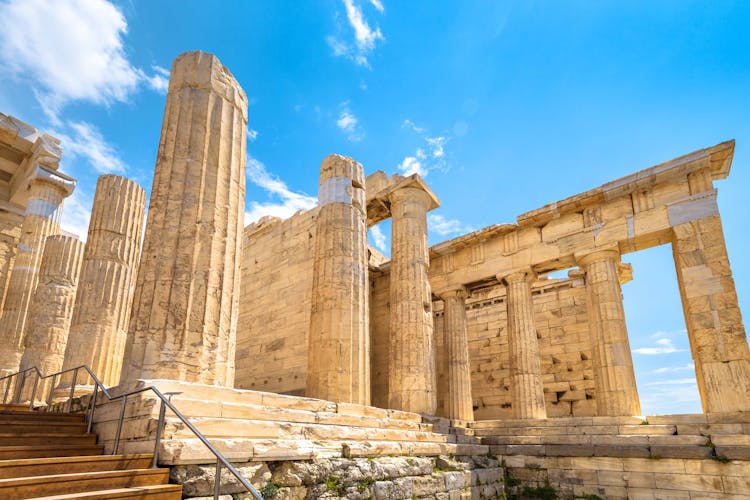You might think you've seen it all, but the moment your eyes set on the Acropolis of Athens, you realize some wonders that genuinely defy expectation. Rising majestically above modern Athens, this iconic citadel holds more secrets than just ancient stones—it cradles a legendary past, epic battles, and architectural marvels that still astonish today.
You’ll see mesmerizing ancient Greek buildings, beautifully preserved historic landmarks, and some serious photo ops. But beyond its visual spectacle, there's something profoundly moving about these weathered stones that capture nearly 2,500 years of human ambition and creativity. So lace up your walk-friendly shoes—history awaits.
What is the Acropolis of Athens?
Dominating the skyline of Athens, the Acropolis is Greece's most celebrated fortress and a beacon of classical civilization. Once the pulsating heart of ancient Athens, it's now a UNESCO World Heritage Site cherished worldwide. Translated literally as "high city," the Acropolis sits strategically on a rocky outcrop, offering panoramic views of Athens sprawling below. This legendary hilltop is home to a suite of majestic ancient structures that honor Greek gods and symbolize knowledge, democracy, and artistic excellence. Its cultural relevance rooted deep in the veins of ancient Athens transcends millennia, influencing concepts of Western democracy, philosophy, and arts.
Today, the Acropolis isn't just a testament to incredible engineering and architectural flair—it's tangible proof of a civilization that radically reshaped the world. Visiting here is a historical pilgrimage and a bucket-list trip no history lover should miss.

Recommended tickets to Acropolis of Athens
Iconic structures of the Acropolis
1 Parthenon
- Architectural style: Doric.
- Purpose: Temple for Athena.
The Parthenon Acropolis' star attraction. Masterfully designed, it captivates visitors through carefully engineered optical illusions—for example, gently curving columns give it an appearance of perfect symmetry and balance. To fully savor its splendor, visit from the northwest corner as the day slips toward sunset, when the golden light softly illuminates the architectural details.

2 Erechtheion
- Notable feature: Caryatids (female-shaped columns)
- Unique trait: Asymmetrical structure
Arguably the quirkiest building on the hill, the Erechtheion showcases captivating Caryatids—beautifully sculpted female figures serving as supporting columns. Its deliberate asymmetry starkly contrasts with the nearby Parthenon. Tip: Capture the best images of these iconic figures from the museum's viewing platform to really highlight their intricate details.

3 Propylaea
- Function: Gateway to the Acropolis.
- Style: Monumental entrance with impressive symmetry.
The majestic Propylaea welcomes visitors with imposing columns and a harmony of architecture that frames breathtaking views of the temples beyond. Impressive in both scale and artistry, it's impossible to hurry past without pausing to admire this photogenic entryway. Give yourself a moment here—the visual introduction to the peak of ancient Athens is definitely worth savoring.

4 Temple of Athena Nike
- Architectural style: Ionic
- Symbolism: Represents victory.
Though small in size, the Temple of Athena Nike is where you’ll find detailed friezes depicting Greek victories. Strategically nestled overlooking Athens, it offers fantastic photo opportunities from the southwest bastion, especially when bathed in afternoon sunlight.

Architectural features & styles
While the Doric and Ionic styles dominate the site, every column, stair, and frieze tells a deeper story of power, resilience, and aesthetic mastery.
Style & symbolism
- The Parthenon is the prime example of Doric architecture, known for its robust, fluted columns and minimal ornamentation—ideal for portraying strength and simplicity.
- The Erechtheion, by contrast, features Ionic columns—slender, with scroll-like capitals—and is famously flanked by the Caryatids, sculpted female figures standing in place of traditional columns.
- The Temple of Athena Nike combines elegance and strategy. Its Ionic columns are finer and more decorative, fitting for a shrine that symbolizes victory.
Historical layers in stone
- The Acropolis has witnessed multiple architectural phases, from prehistoric fortifications to 5th century BCE Periclean grandeur, and even Roman-era enhancements.
- The grand entrance, the Propylaea, shows clear signs of these layered periods, including Mycenaean-like bastions and a complex stair-ramp system introduced under Mnesicles, its principal architect.
- Many structures were adapted or rebuilt over time. For example, Cimon rebuilt damaged sections of the ancient circuit wall using neatly dressed ashlar masonry following Persian destruction in 480 BCE.
Materials & craftsmanship
- Most structures are built from Pentelic marble, known for its soft glow under the sun, giving the temples a golden hue.
- Earlier phases used Acropolis limestone and poros stone, particularly in foundational and defensive elements.
Restoration through time
- After centuries of wear, including being used as churches, mosques, and ammunition storage, the monuments faced severe damage—especially in 1687, when a Venetian bombardment exploded a gunpowder cache in the Parthenon.
- Modern restoration projects aim to preserve the Acropolis using original techniques and materials where possible, carefully correcting earlier mistakes and reinforcing structural integrity.
Why the Architecture still impresses today
The Acropolis' architecture remains impressive today not just for its elegance, but because it's a living example of thoughtful, visually harmonious design. Masterful symmetry, careful proportions, and distinctive details like the Caryatids of the Erechtheion continue to influence modern architecture worldwide. Its styles—particularly Ionic columns and monumental gateways—have inspired iconic Western landmarks from the U.S. Supreme Court to the British Museum. The site itself stands as a tangible reminder of ancient Athenian ideals—democracy, creativity, intellectual ambition—values still deeply embedded in contemporary society, making every visit feel like walking through history.
11 fascinating facts about Acropolis Architecture
Exploring the Acropolis is way more exciting when you notice the little secrets hidden in its architecture that casual travelers might overlook. Here are some intriguing historical design details that make Athens’ beloved rocky hilltop even more awe-inspiring:
- Architectural harmony with nature: Mnesicles, architect of the massive gateway—the Propylaea—brilliantly incorporated the Acropolis’ steep landscape into his design, crafting gentle ramps and stepped terraces to make your upward journey effortless and visually stunning.
- Ingenious optical illusions: The Parthenon isn't just columns and marble—it's a piece of architectural wizardry. Its columns subtly lean inward, their thickness varying slightly along their height. Why? So that, from afar, everything feels perfectly straight and balanced.
- Uniquely expressive Caryatids: The Erechtheion is supported by columns shaped like beautifully carved female figures—called Caryatids. Look closely—each statue has distinctive facial features, clothing, and hairstyles, bringing a life-like personality to architecture that's lasted thousands of years.
- An unfinished masterpiece: Ever wondered why the gateway, the Propylaea, looks slightly incomplete? The ambitious design was never fully realized due to the outbreak of the Peloponnesian War, freezing this grand entrance mid-construction.
- Layers of fortification: The impressive Nike Bastion doesn't just offer incredible panoramas; it’s built on top of an ancient defensive structure dating back to prehistoric times—a clear hint of the Acropolis' extensive defensive past.
- Secrets below ground: There's a prehistoric wall, possibly dating back to the great Mycenaean civilization, hidden beneath your feet around the Acropolis, clueing us into a fortified history that stretches well beyond classical times.
- Spectacular statue within Parthenon: In antiquity, the iconic Parthenon wasn’t empty like it is today—it once housed a towering gold and ivory ("chryselephantine") statue of Athena created by legendary sculptor Pheidias, celebrating Athens’ patron goddess.
- Dramatic stories in stone carvings: Inspect the Parthenon’s friezes and metopes and you'll see vivid scenes depicting epic mythological battles like the Gigantomachy and Centauromachy, symbolically highlighting Athens’ triumph over barbarism.
- Sacred myths imprinted in architecture: The Erechtheion enshrined amazing legendary relics—the mythology-infused marks of Poseidon's trident and Athena’s sacred olive tree emphasized Athens' divine favor through architecture itself.
- Winged victory depiction: Originally, the parapet surrounding the Temple of Athena Nike was adorned with intricate carvings of 'winged victories' (Nike), scenes now preserved in the fantastic Acropolis Museum.
- Pericles’ architectural ambitions: Most iconic Acropolis structures we admire today—like the awe-inspiring Parthenon—were part of a grand building campaign led by statesman Pericles during 5th-century BCE Athens, a striking architectural statement of the city’s monumental power.


